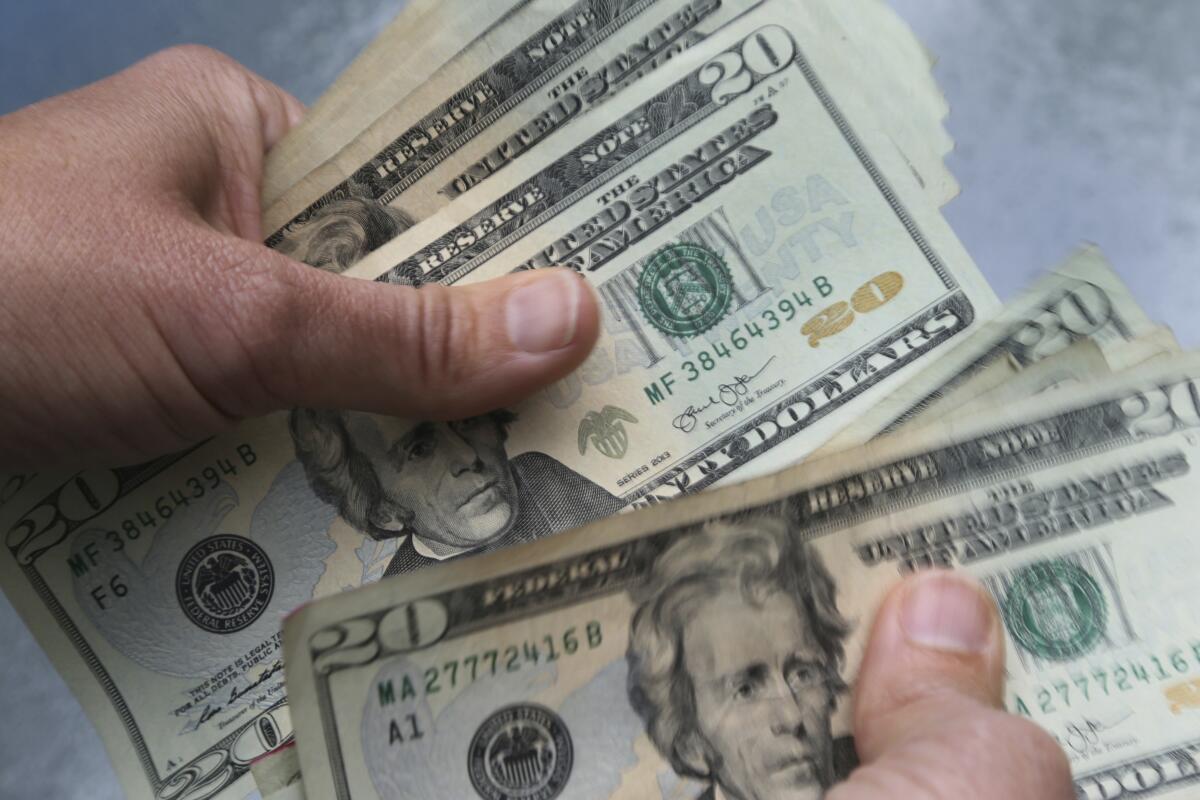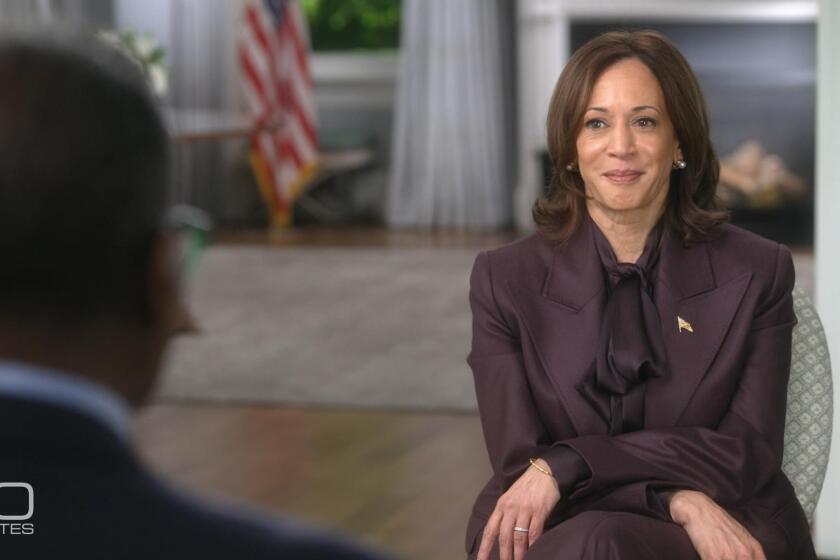Newsletter: How to get your PPP loan forgiven

- Share via
Good morning. I’m L.A. Times Business reporter Samantha Masunaga, filling in for Rachel Schnalzer to bring you our weekly newsletter. The window to apply for federal Paycheck Protection Program loans, which have provided a lifeline for many small businesses during the COVID-19 pandemic, closed Monday.
The next steps for recipients: Spend the money and erase the debt.
The loans are designed to be forgiven, but it’s not automatic. Recipients can keep the money if they demonstrate that they used it for certain purposes and largely refrained from cutting jobs and pay.
As of last week, 3.3 million PPP loans, worth a combined $279.4 billion, have been forgiven out of a total of 5.2 million loans issued last year, according to the Small Business Administration. About $1 billion in PPP loans were not forgiven, while $81.5 billion in loans are under review, and applications for forgiveness have not been received for $159.1 billion worth of loans.
Overall, more than 99% of loan value has been forgiven for those that have completed the forgiveness process, the SBA said.
Here’s a look at the process and tips on what small businesses can do to improve their chances of getting loan forgiveness.
Who’s eligible: For your loan to be fully forgiven, you must have maintained your employee head count and those employees’ compensation levels, as well as spent at least 60% of the PPP money on payroll costs. That includes wages, bonuses and benefits, including employer-paid insurance and sick leave, said Kelsey Sheehy, a small-business expert with financial advice website NerdWallet.
The rest of the loan money must have been spent on what the SBA defines as eligible expenses: operating costs, mortgage payments, utilities, protective equipment for workers and property damage from civil unrest last year that was not covered by insurance.
The loan forgiveness is not all-or-nothing. Borrowers who spent most of their PPP money on eligible expenses can get that portion of their loan forgiven, Sheehy said. They’ll have to repay the rest.
When to apply: Borrowers can apply for forgiveness after they have spent all of the loan money they want forgiven.
Those who received a PPP loan in the initial round had only eight weeks to use the money. For PPP loans issued after June 5, 2020, borrowers are given six months to spend the cash. They don’t have to start repaying the loan until 10 months after the spending period ends.
“Borrowers have a pretty lengthy grace period to apply for loan forgiveness,” Sheehy said.
She advised PPP loan recipients to apply before they have to begin repaying, though they can send in applications up to the loan’s maturity date.
Gather records: Borrowers should keep good records of the expenses they paid with the loan money. Gathering documentation can be one of the more time-consuming parts of applying for loan forgiveness, Sheehy said.
Even if the loan amount doesn’t require itemized expense lists, PPP loan recipients should keep receipts and be able to account for every dollar spent, in case the SBA asks for it later.
“You don’t want to be in a position where a year from now ... you’re scrambling,” she said.
The process: Borrowers should work with their PPP loan lender and make sure they have the right forms to fill out. The form will be “pretty explicit” in what’s required, said David Blankenhorn, an Orange County-based mentor at Score, a nonprofit network of volunteer small-business mentors that partners with the SBA.
If loan recipients have questions, they should contact their lender.
“You want to be crystal clear on what your lender’s process is for loan forgiveness,” Sheehy said. “Be in constant communication with your lender so you know exactly what’s expected of you before those deadlines start coming up.”
Borrowers can also ask for additional advice and guidance from Score, small-business development centers and community financial institutions, she said.
After the borrower fills out the forms and adds any necessary documentation, the lender will send the form to the SBA, which determines whether the loan qualifies for forgiveness.
If borrowers fill out the form correctly and have all documentation of expenses, the chances of getting the loan forgiven are “pretty good,” Blankenhorn said.
If the lender fully denies a loan-forgiveness application, the borrower can request a review of the application by the SBA. If the SBA denies forgiveness, the borrower can appeal to the SBA’s office of hearings and appeals within 30 days.
Other stories you may find helpful
◆ Upcoming COVID-19 financial relief for Californians could include checks, business grants and child savings accounts, Patrick McGreevy reports.
◆ If you lost work, you may be able to get free health insurance. Certified financial planner Liz Weston explains how.
◆ Southern California home prices jumped 20% in April compared with a year earlier, reaching an all-time high. Jack Flemming explores why.
◆ House hunting? Flemming shows what $700,000 could buy in seven L.A. communities.
◆ Uber has reneged on the “flexibility” it gave drivers to win their support for Proposition 22, writes columnist Michael Hiltzik.
◆ Even fraud alerts can be part of a scam, columnist David Lazarus cautions. He breaks down how a con artist made a play for more than $10,000 using a Chase bank fraud warning.
One more thing
A San Francisco start-up tells would-be parents that its test can identify embryos with the lowest likelihood of developing cancer, schizophrenia and other diseases. But there are concerns.
My colleague Melody Petersen recently spoke with experts to learn more about Orchid Inc.’s tests. One concern: that parents could select an embryo thought to be at a reduced risk of one disease without understanding it is at a higher risk for something else. “If you pick an embryo that’s at low risk for breast cancer, you may actually be increasing your risk for other traits,” said Peter Kraft, a Harvard professor of epidemiology.
Experts also point to ethical questions about such tests. Gabriel Lázaro-Muñoz, an assistant professor at Baylor University’s Center for Medical Ethics and Health Policy, said he’s worried about claims to reduce the risk of schizophrenia, given discrimination against those with psychiatric disorders. “Even though these companies are trying to market this technology within a medical context,” he told Petersen, “we have to be really careful about potential misuses.” Read the full story here.
Have a question about work, business or finances during the COVID-19 pandemic, or tips for coping that you’d like to share? Send us an email at [email protected], and we may include it in a future newsletter.
Inside the business of entertainment
The Wide Shot brings you news, analysis and insights on everything from streaming wars to production — and what it all means for the future.
You may occasionally receive promotional content from the Los Angeles Times.





